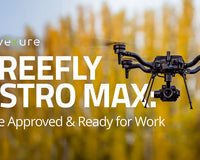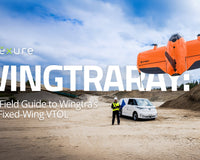Precise, cinematic and fluid gimbal control is key to high end cinematic performance on set, the DJI Master Wheels achieve precision and simplicity to ensure a smooth and intuitive production operation. This year at NAB 2018, DJI has taken the wraps off of their control systems which we have seen make cameo appearances at pro cinema events over the last few months.
Control wheels bring precision control and framing to every set with advanced control algorithms and a DJI's state-of-the-art product design. The DJI Master Wheels can be configured into three different setups for control of gimbal pan, tilt, and roll. Each wheel has its own independent control module to program and control speed, smoothness, and damping. Changing damping on a single control module allows an operator to increase or decrease damping for the particular wheel and designated axis.
Tactically Precise and Intuitive Control
Camera operators and cinematographers have been using wheels in filmmaking for ages as they provide an intuitively simple and tactile experience in an otherwise complex operation. As wheel systems continue to innovate they have become the preferred method of gimbal control or the simple joystick or fluid head.

Modular Design for Ultimate Versatility and Function
Master Wheels can either be purchased in a 2-axis or 3-axis setup and are fully modular in their design. This allows for control modules to be configured on the wheel base or detached from the base for complete freedom as to how the wheels are used on each and every set. Detached wheels and connected to the base via cables in length of 16 feet.
In addition to removing and independently mounting control modules, users can also adjust the angle of their control wheels to create the most intuitive and ergonomic fit for the operation.

Reliable and Adaptable Transmission Modes
As with other DJI products, the DJI Master Wheels feature a dual frequency transmission system for 2.4 GHz as well as 5.8 GHz. This dual frequency transmission system supports an operating range on set of up 1.5+ miles. Note that when transmitting wirelessly over longer distances users may see increased latency. To keep latency as low as possible it is recommended to use a wire connection which is also supported and keeps latency to a minimum at just 10 milliseconds.
In addition to standard wireless and wired tramission, users can further adapt the Master Wheels on set with the Wireless Receiver Antenna. This allows for the radio transmission module to be attached to a cable and placed further from the Master Wheels base, preferably in an open area where a stronger radio transmission signal can be achieved.












